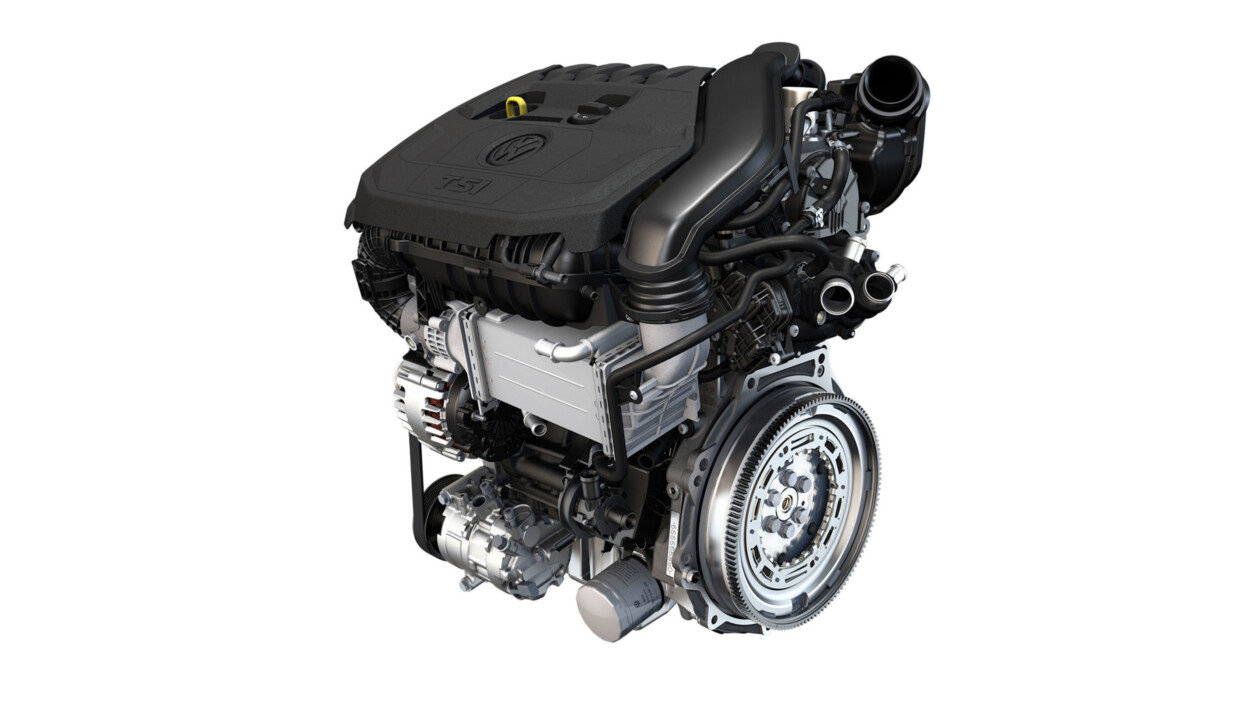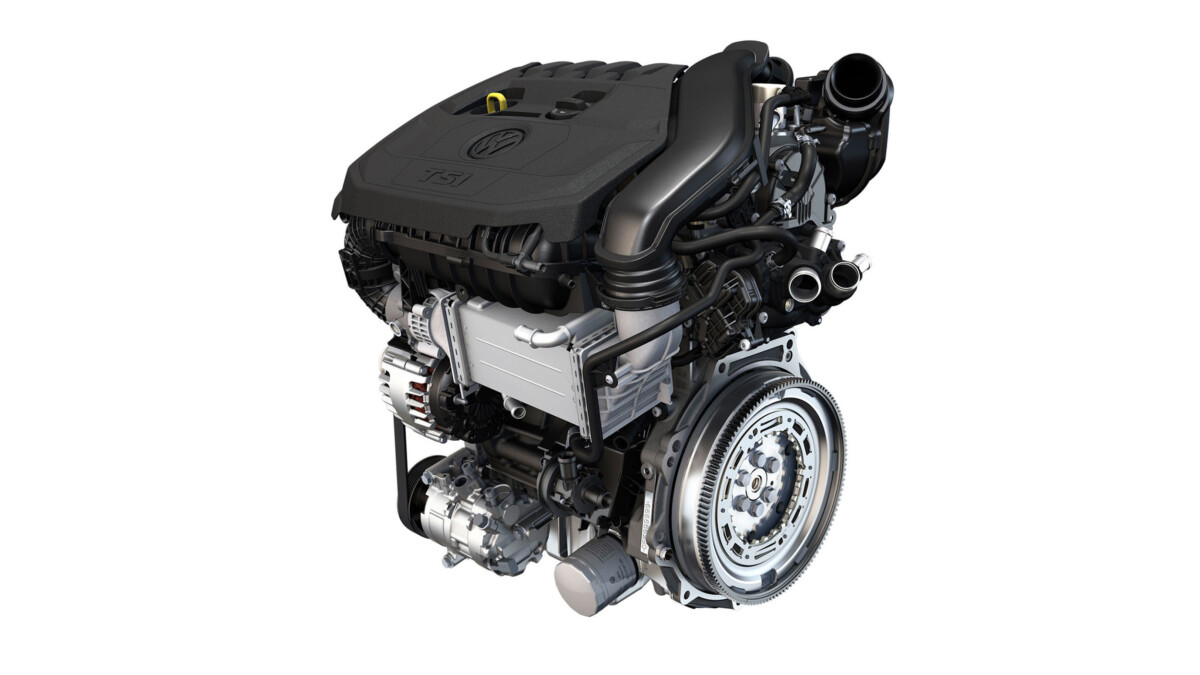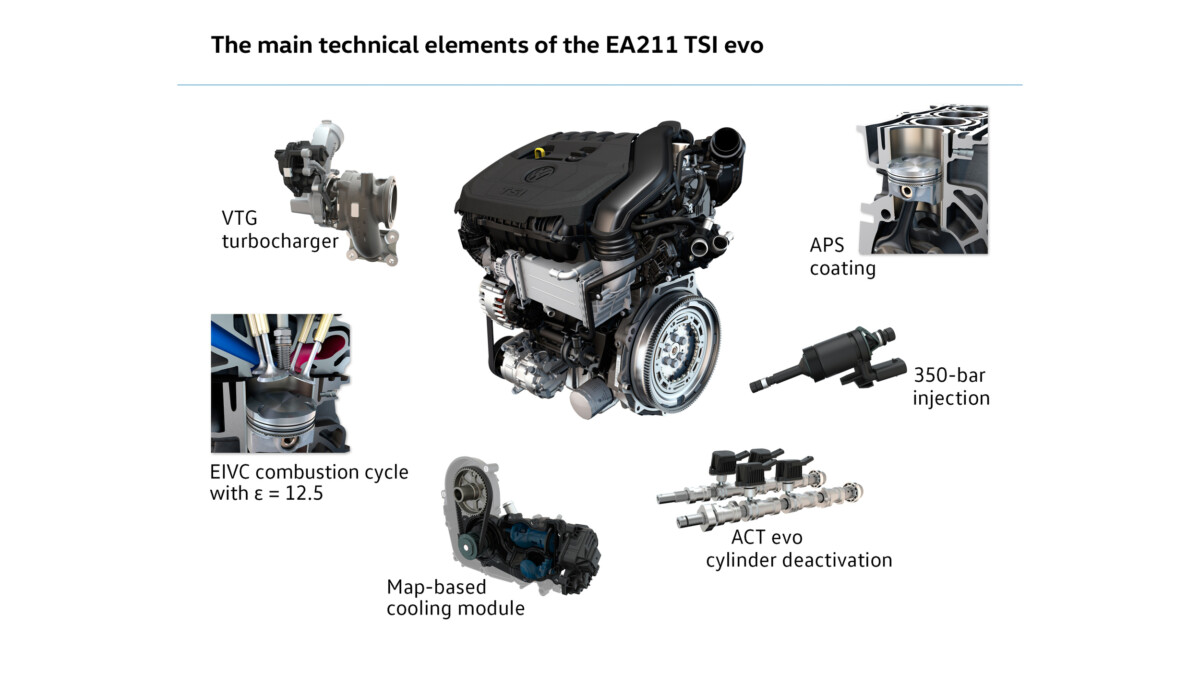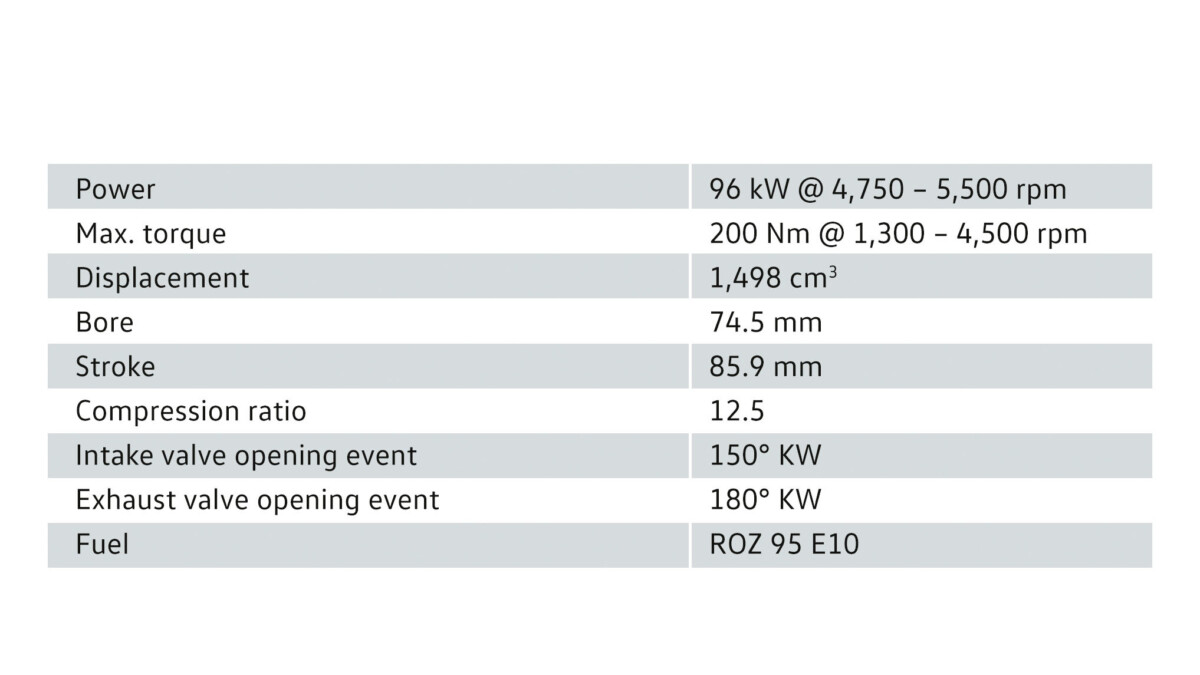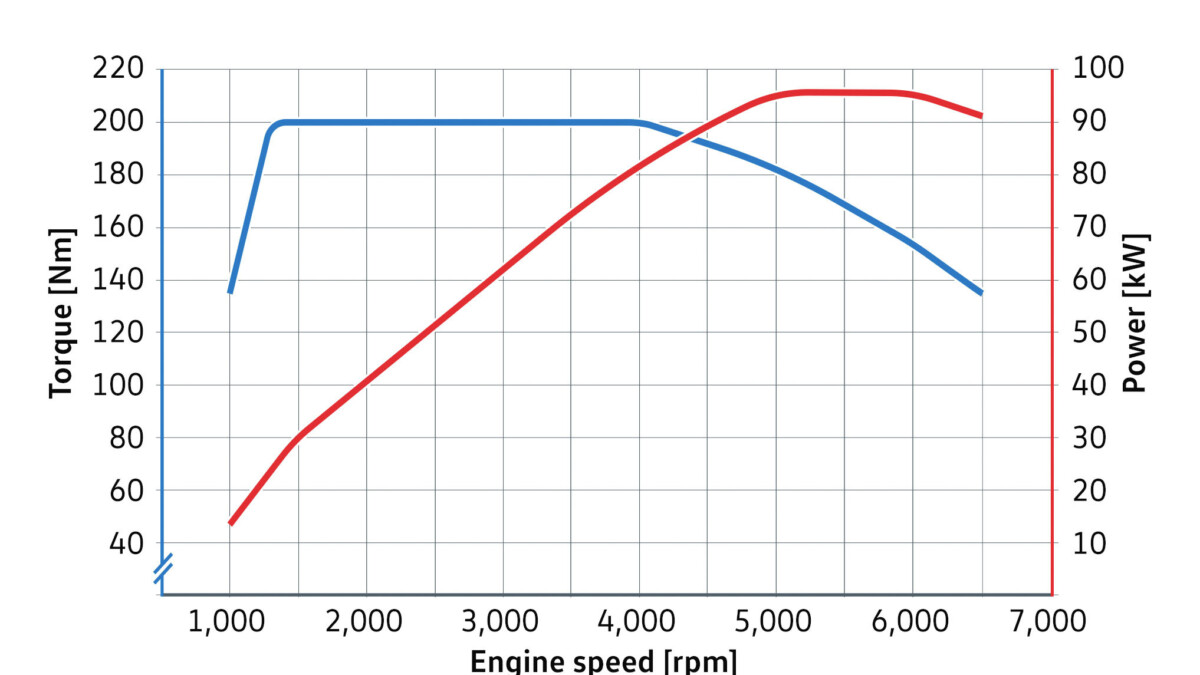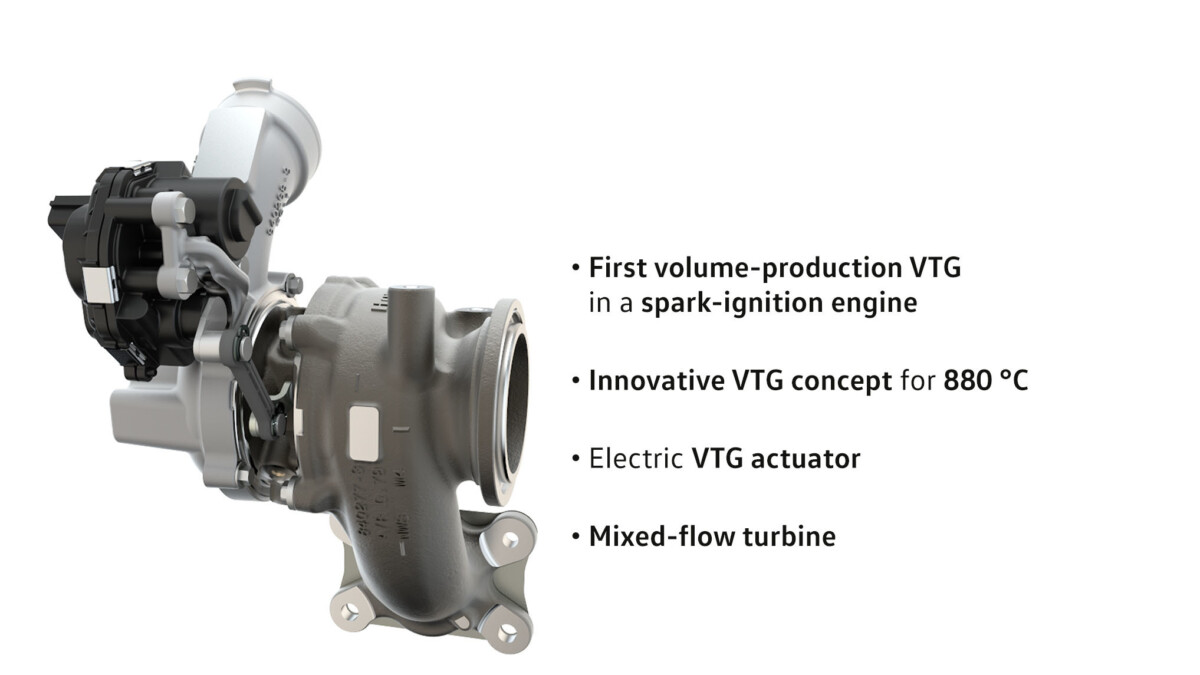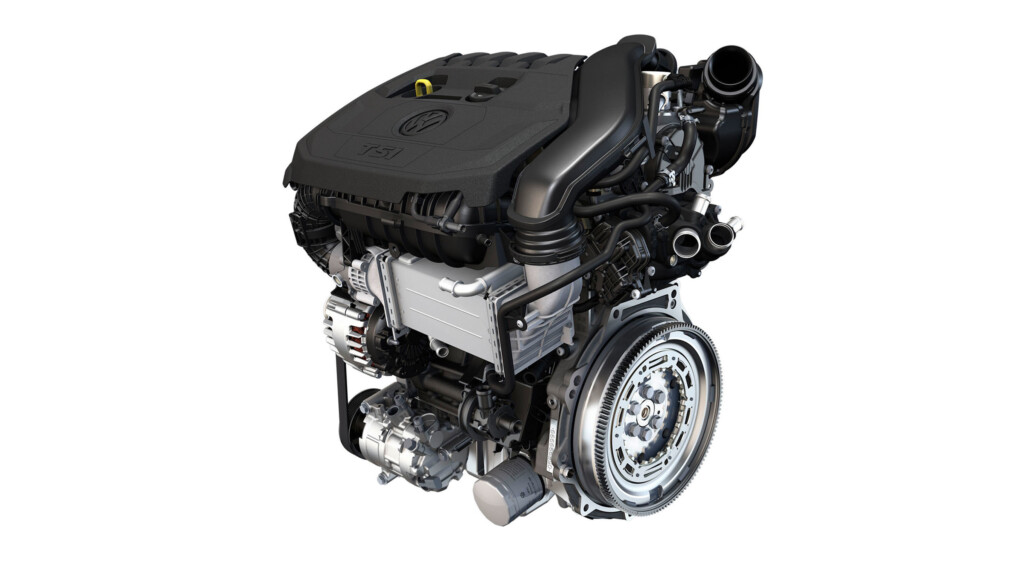
At the 37th International Vienna Motor Symposium, Volkswagen has unveiled the latest generation of the so-called EA211 TSI evo engine.
The 1.5-liter powerplant will be the first mass-market petrol-fueled mill to use variable turbine geometry (VTG) for its turbocharger. With outputs of 129hp and 148hp, it is set to arrive in European models by the end of this year.
According to VW, a large number of technical innovations have been combined in the new EA211 TSI evo that result in a maximum torque that is available extremely early (from 1,300 rpm) and a significantly enhanced fuel economy, with consumption reduced by up to 1 litre over 100 kilometres.
The main technology elements of the new EA211 TSI evo result in efficiency benefits of up to 10% compared with the previous 1.4l TSI unit. An important aspect here is that the improvements in fuel economy take effect across a wide range of the engine map.
Consequently, they do not merely apply under test bench conditions but also have a distinct impact on the customer’s everyday driving.
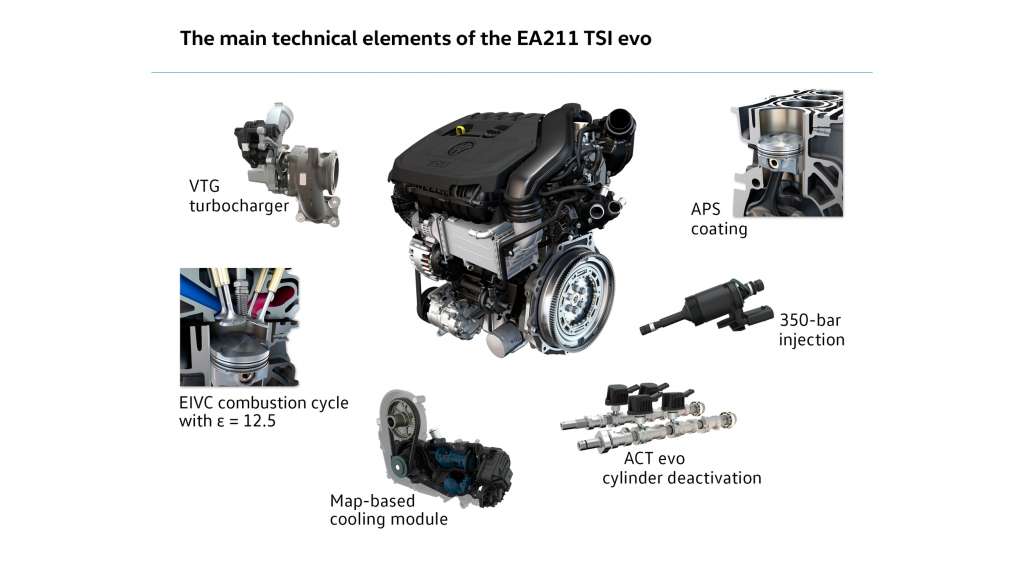
The Miller combustion cycle is a key innovation in the new EA211 TSI evo. The compression ratio is now impressively high 12.5:1, with the engine working under the Miller combustion cycle. The cylinder liners in the aluminium crankcase for the 148hp version are coated using a procedure called the atmospheric plasma spray (APS) which reduces friction on the piston rings and increases the heat dissipation when compared to cast-iron crankcases.
The cylinder head is also extensively re-engineered, adapting the valve angle and combustion chamber for the best possible execution of the Miller cycle. The exhaust manifold is still integrated into the cylinder head while the cylinder deactivation feature has been further improved and will be available with all versions.
A world first for the TSI evo is the use of an exhaust gas turbocharger with electrically actuated variable turbine geometry (VTG).
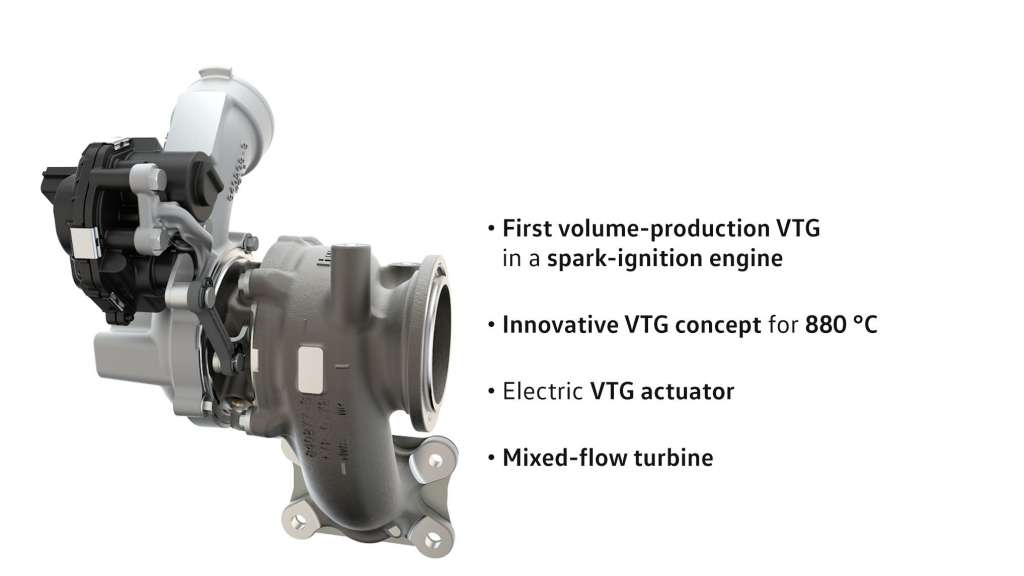
Due to early intake valve closing in the Miller combustion cycle, volumetric efficiency is lower than for an engine with standard valve timing. Under partial load, the resulting de-throttling leads to a fuel-consumption benefit for the TSI evo. High charge pressure balances out the effect of the inherently lower effective stroke volume to create high low-end torque.
At low engine speeds in particular, this places very high demands on the turbocharging system. Through adaptation of turbine flow characteristics to match the operating points, an exhaust-gas turbocharger with variable turbine geometry presents the opportunity to provide very high turbine output and thus high charge pressure from low engine speeds.
The increased accumulation effect on the VTG turbine, in combination with a reduced moment of inertia in the turbocharger, additionally results in very spontaneous response characteristics. Compared with a 1.4l TSI, the step change in load to the maximum torque takes place some 35% faster. Overall, VTG technology forms an integral part of the TSI evo combustion process.
The indirect charge-air cooling has also been modified. In contrast to the EA211, the cooler is located in the pressure pipe, downstream of the compressor outlet and before the throttle valve, meaning it, too, is cooled. The new installation position made it possible to increase the size and performance of the cooler, while maintaining a very compact overall package. It is now able to reduce the temperature of the charge air to 15 Kelvin above that of the ambient air.
The injection system is the first application of the fourth-generation Volkswagen direct-injection system. Optimisation of the overall system and its components facilitated an increase in injection pressure to 350 bar. The resulting smaller droplet size improves mixture formation, leading to benefits such as a substantial reduction in particulate emissions.
Other features of the TSI evo include an extensive friction package. This encompasses a map-controlled, fully variable oil pump, polymer coating of the first main crankshaft bearing and a switch to low-viscosity 0W20 oil.
Other posts by AF Newsdesk

